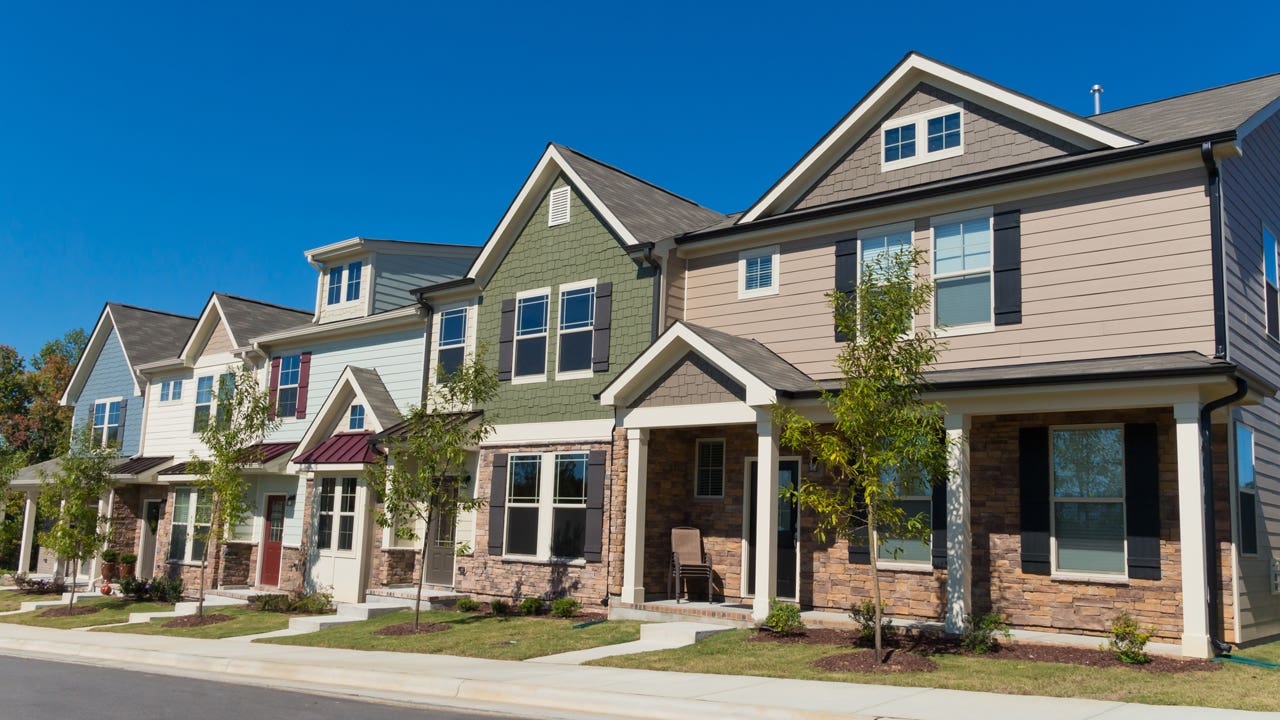What does ‘zero lot line’ mean in real estate?

Typically, when you buy a house, you’re not just buying the building itself. You’re also buying the land on which it sits. As you explore the boundaries of the property, you might learn that the home comes right up to the lot line, sometimes with only the narrowest sliver to spare. This is a zero lot line home. Zero lot line homes are not uncommon, but there are some things potential homebuyers should consider before choosing one.
‘Zero lot line’ definition
In a zero lot line home, one or more walls of the structure runs along, or very close to, the property boundary. In many cases, the home comes close enough to the lot line to leave only a sliver of outdoor space — hence “zero lot.” Some zero lot line homes may even share walls with adjacent homes, such as rowhouses and townhouses.
These types of properties are most commonly found in urban areas with high-density housing. Minimizing outdoor space while maximizing indoor square footage allows builders and developers to fit more residents into a smaller overall area.
To clarify, here’s an example: As you’re shopping for a home, you find one you like but wonder why it doesn’t have any yard space on the left side. You research the boundary lines of the lot and discover that the left wall of the home runs just inside the property line. That makes it a zero lot line home. But you like everything else about the house and don’t foresee any need to expand or build an addition, so you decide to purchase it anyway.
Pros of zero lot line homes
There are advantages to of this type of residence:
- Maximum square footage for the price: With a property that uses the majority of its available land for indoor living space, you’re able to get more home for the money. A zero lot line house generally costs less per square foot than a house with more outdoor space — in other words, you’re not paying extra for extra land.
- Less outdoor maintenance: If you’re someone who doesn’t enjoy gardening or yard work, this type of home delivers what you want. Minimal outdoor space means minimal work required to maintain it.
- Community feel: With little to separate zero lot line homes from neighboring properties, people living in these types of residences often feel a greater sense of community. If you like meeting and interacting with your neighbors, this home type could be for you.
Cons of zero lot line homes
These properties also come with some drawbacks:
- Less privacy: A zero lot line home could mean shared walls, or walls so close they might as well be. Even if it doesn’t, at least one of the home’s windows may look directly into the next-door neighbors’ windows. And if the home is not set back from the street very far, drivers, bikers and pedestrians might be seen and heard.
- Limited opportunity to expand: If you think you may need more square footage in the future, a zero lot line home might present a challenge. While you may have the opportunity to build an additional story to increase your space, you likely won’t be able to expand its footprint.
- Potential property line issues: Property line disputes can happen with any real estate, but they can be particularly troublesome — and costly — if the actual structure of a home oversteps its lot line. Before you buy a zero lot line home, do your due diligence to ensure the structure doesn’t go past the boundary line.
Bottom line
A zero lot line property is any property in which the structure of the home touches or comes very close to the boundary of the lot. Because they can be more cost-effective and come with little maintenance, these houses deliver some appeal. But make sure you do your homework before purchasing one, especially when it comes to getting clarity on the actual property boundaries.






